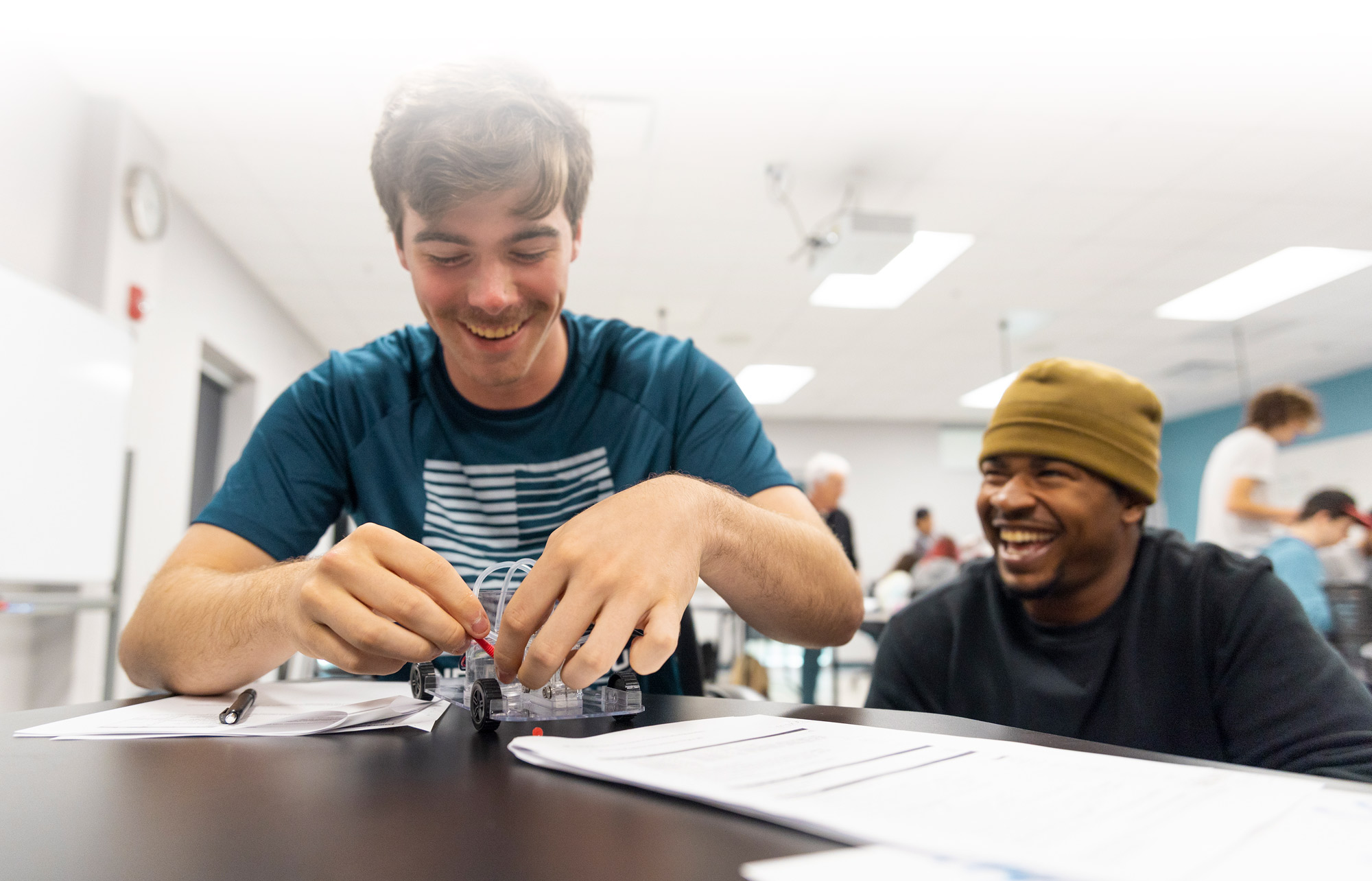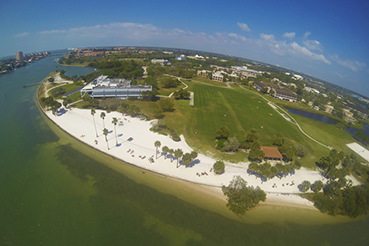Making physics models that work in the real world
Physicists use mathematical models to create and fix mechanical, electromagnetic, thermodynamic and atomic/molecular systems. An Eckerd physics degree prepares students for this fascinating work in classes of fewer than 30 students. Graduates of our program go on to work in research and development, science, engineering, education, medicine, law, business and the military.
Only@Eckerd
More attention from Ph.D.s
Introductory courses usually have between 20 and 30 students, while upper-level Physics classes have five to 10 students. This means better learning for everyone.
A student-run MakerSpace
Many physics students are leaders in the campus MakerSpace. They use what they’ve learned to lead activities for first-year students, Open Make Nights and weekend workshops.
Paid summer gigs
For one week every summer, select Eckerd physics majors get paid to show 140 middle-schoolers how to do things like make solar cells and silver glass.The week-long Summer Science Splash camp provides valuable experience in teaching.

In Their Own Words
“I cannot stress more to new students how wonderful it is that a professor knows your name and your story. Eckerd supported me as an individual. This support allowed me to grow in my confidence as a learner and as leader. Dr. Cox mentored me throughout my Eckerd career. She recognized my potential and helped me through challenges I faced including applying to dual degree programs.”
— Helena Hurbon, Class of 2018
Beyond the Classroom
Interested students who are able and motivated are often invited to work with faculty in the summer — sometimes as early as their first year. Recent projects include:
- Simulations of Hall thrusters (plasma physics)
- Computational models for nuclear scattered potentials (nuclear physics)
- Designing, characterizing and measuring the coupling of electronic oscillators (electronics and statistical mechanics)
- Building and testing experimental apparatus for advanced laboratories (experimental physics)
Students work on all the projects Eckerd Physics professors undertake. These fall into four categories:
- Atomic Cluster Studies
- Theoretical Nuclear Physics
- Plasma Engines
- Theoretical General Relativity
Not all research takes place on campus. One student spent a summer doing computational biophysics research at the University of South Florida. Another interned with the American Physical Society in Maryland, where she wrote up current events in physics for web publication
Every year, Physics majors volunteer at the St. Petersburg Science Festival. Many also teach computer aided design (CAD) to middle school students through the first-year Physics course “Engineering a STEM Exhibit.”
Service Pics on FlickrIn the last three years, physics majors have spent semesters abroad in Australia, Chile and Denmark. Others have spent the three-week Winter Term in Morocco, Spain, Cuba, Martinque, Nepal and France.
Study Abroad Pics on FlickrPopular classes
Quantum Physics I
This class explores modern quantum theory and relativity, including a comparison of classical and quantum results.
Electricity and Magnetism
Study electric and magnetic fields, AC and DC circuits, using Maxwell’s equations. Includes an introduction to electromagnetic wave theory.

Outcomes
What can I do with a physics degree?
- Accelerator Operator
- Applications Engineer
- Data Analyst
- Design Engineer
- High School Physics Teacher
- Information Technologist
- Lab Technician
- Laser Engineer
- Optical Engineer
- Software Developer
- Systems Analyst
- Technical Specialist
- Web Developer
Where our physics majors go to graduate school
- Florida Institute of Technology
- Georgia Institute of Technology
- John Hopkins University
- University of South Florida
- University of Virginia
Where our physics majors go to work
- Cisco Systems, Inc.
- Ericsson
- General Electric
- Hawaii Natural Energy Institute
- Hewlett Packard
- Hitachi Data Systems
- Intel
- Lockheed Martin
- Los Alamos National Laboratory
- Medical University Of South Carolina
- NOAA
- Progress Energy
- Radiological Solutions
- Raytheon
- Robert E Boyle & Assoc. Pa
- Sierra Club
- St. Jude Children’S Research Hospital
- The Cheney Clinic
- The Scripps Research Institute
- U.S. Air Force
- U.S. Navy
- Volaris





